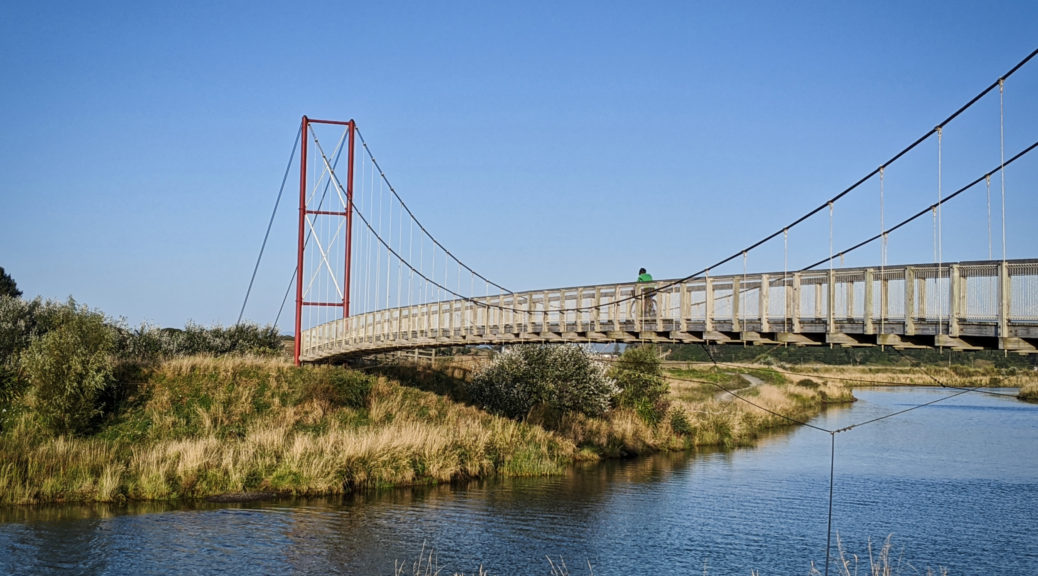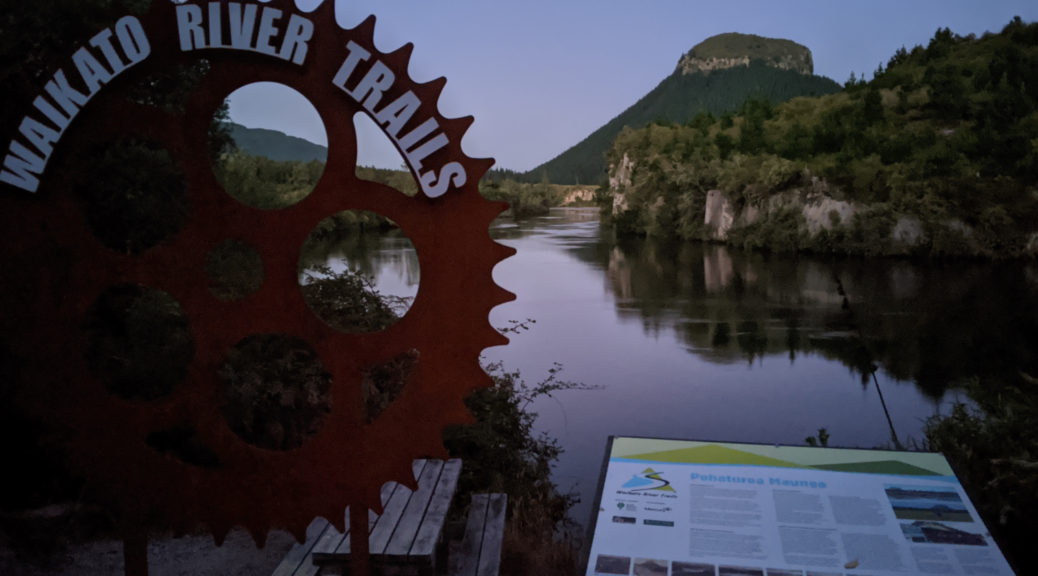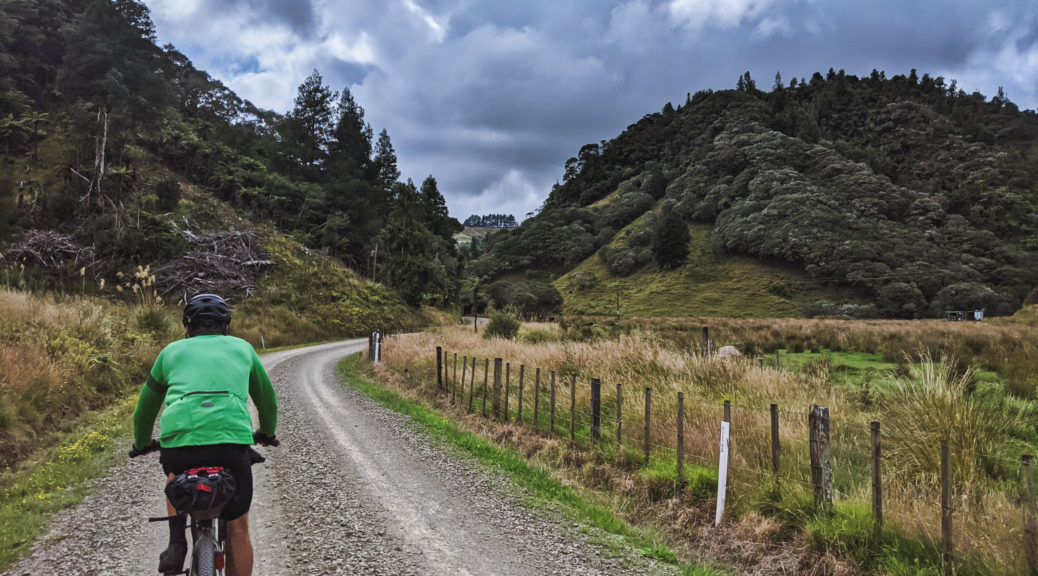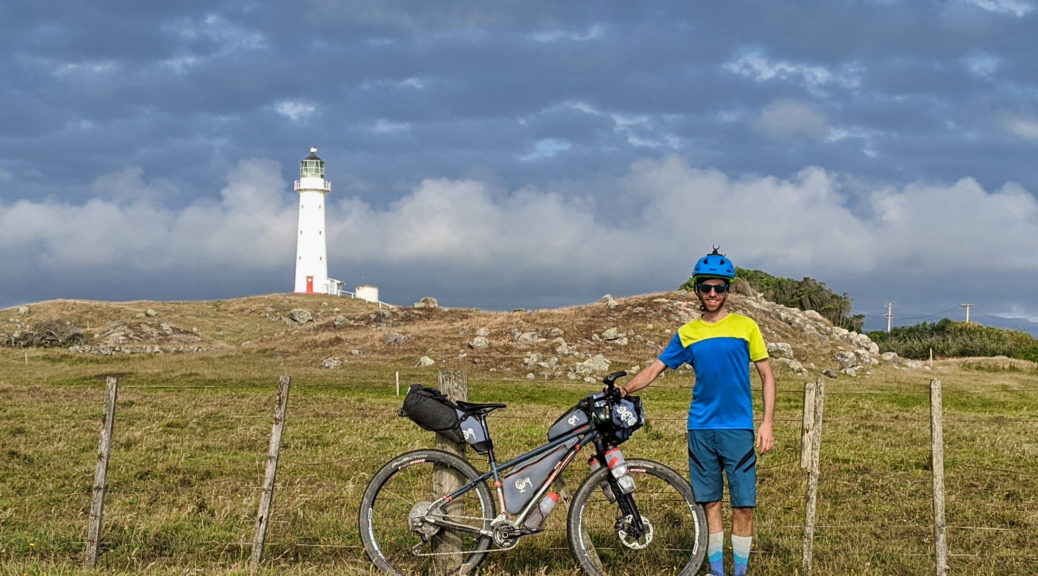The sun was just up by the time we got away from a bivy spot that proved very conducive to sleep. All morning was spent on roads and trail I was familiar with from many past rides – in more recent years the Geyserland Gravel Grinds, and further back my first bike tours when I was fourteen and fifteen years old.

Highlights were some nice early morning gravel, quiet roads, ascending Waikite hill for the first time since I was a teenager (and finding my climbing legs), a big refuel at the excellent Benny Bee cafe, discovering the short section of trail around the base of Rainbow Mountain is better in this direction (SW to NE), clear views of Mt Tarawera, the one-lane bridge at Rerewhakaaitu is finally open again and losing all our altitude to sea level – easy riding with another kind wind.
Down on the coastal plains, the public holiday traffic was tolerable; the big resupply and ice cream at Awakeri, more than tolerable. It was definitely warmer down at low elevation, we had another refuel at Taneatua as there was some decent climbing coming up. Half an hour up on rough gravel through forest certainly had us sweating – there were numerous pauses in the shade, and helping some people who were rather hopelessly lost. Back to Ohiwa Harbour-level, Pete had found a way to shorten our time on the highway to Opotiki.
Through farmland and orchards, on a real mixture of connecting roads (some sealed, some fast gravel, some very slow gravel) – this way was far slower, but pretty much deserted, compared to the highway option.

Our arrival in town coincided nicely with dinner hours, we found a great spot where we could wheel our bikes around the back to the outdoor eating area – I promptly tucked into a large meal, one of the better of the trip. Resupply done, it was off for three hours of evening riding which would be one of the stand-outs of the entire NITT.
Other bikepacking trips through the area had not afforded me the opportunity to ride the short Dunes Trail that parallels the beach east out of town. Finally I had the chance; a balmy evening with the sun setting and wind behind us was just the ticket.

 The waxing moon, as it was for the week I was away, made its appearance for the night.
The waxing moon, as it was for the week I was away, made its appearance for the night.

 Looking around the eastern reaches of the Bay of Plenty – that evening’s and the following day’s riding.
Looking around the eastern reaches of the Bay of Plenty – that evening’s and the following day’s riding.

 Not a bad evening to be out for a ride at all.
Not a bad evening to be out for a ride at all.
Onto the quiet highway after the trail ended, a glorious evening darkened into a spectacular night for riding – one of the best I’ve had. Still, warm, the sun slowly setting allowed the moon to brighten and reflect off the Pacific stretching in front of us.



Mostly dead flat, there were a couple of lumps until a decent two hundred metre climb – approaching ten o’clock and still in short sleeves we were. As much I was enjoying the night ride, as the light faded I was wondering what sights I was missing – we started looking for a bivy site. None forthcoming, we dove off the road up a forestry road. When I say “up”, it was fifteen minutes of pushing up a steep hill before we found a spot remotely flat to camp. A few minutes later, I’d decided the dug out bit to the side looked the most level, smoothest and least rocky part of the clearing; that is how we both came to tick off that bikepacking badge of “sleeping in a ditch”. On such a warm and clear night, it was a fantastic place to sleep.

Now into the fourth day of our traverse, we’d had another excellent one – not nearly as hilly or slow as the previous two – and were confident we’d knock this off within the planned four days. I might just make it back to work on time…


 There’s that railway again, for the last time on this trip.
There’s that railway again, for the last time on this trip.


 The end of the trail would come close to Pohaturoa, which was just over the river from the trailhead.
The end of the trail would come close to Pohaturoa, which was just over the river from the trailhead.
 The day promised to be cloudier than the previous few.
The day promised to be cloudier than the previous few. No views through the bridge of Taranaki today.
No views through the bridge of Taranaki today. Cruising up a two hundred metre climb; flowering kanuka was also a feature of the day.
Cruising up a two hundred metre climb; flowering kanuka was also a feature of the day. 
 Climbing Moki Rd, heading for the second tunnel of the day.
Climbing Moki Rd, heading for the second tunnel of the day. Tunnel number two for the day.
Tunnel number two for the day. A good sign as we head up Kiwi Rd; we saw little traffic, as had been the case since Urenui.
A good sign as we head up Kiwi Rd; we saw little traffic, as had been the case since Urenui. Tunnel #3.
Tunnel #3. Duck!
Duck!

 Hobbit Hole, the sign says; the tunnel on the FWH.
Hobbit Hole, the sign says; the tunnel on the FWH. Approaching Tahora Saddle – rails stay low.
Approaching Tahora Saddle – rails stay low. The hotel wasn’t really open at nine-thirty, but they rustled up bacon and eggs for me nonetheless – supreme.
The hotel wasn’t really open at nine-thirty, but they rustled up bacon and eggs for me nonetheless – supreme. I rode through the tunnel doing my best impression of a logging truck…
I rode through the tunnel doing my best impression of a logging truck…  …and got this photo for my efforts.
…and got this photo for my efforts. Sometimes you get to see Taranaki.
Sometimes you get to see Taranaki.
 The Tasman Sea tantalisingly close and less traffic once I was off the route between towns.
The Tasman Sea tantalisingly close and less traffic once I was off the route between towns. So, that’s the heading-west side of the trip done.
So, that’s the heading-west side of the trip done.